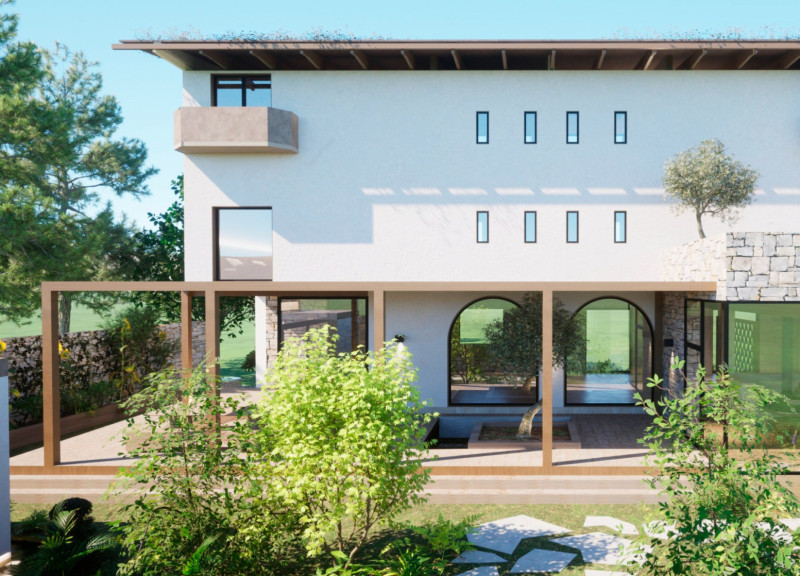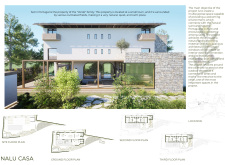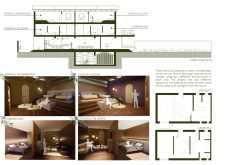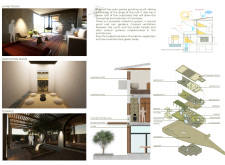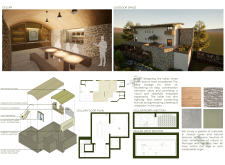5 key facts about this project
### Overview
Nalu Casa is an architectural project located in Portugal's serene countryside, designed to create an inviting multipurpose space while honoring the local cultural heritage. The building is situated within cultivated fields, promoting a strong connection with the surrounding landscape. Emphasizing harmony with nature, the design features cohesive architectural elements that facilitate interaction among users and their environment.
### Spatial Strategy
The building is organized across three levels, each serving distinct functions conducive to both communal and private interactions. The ground floor serves as the heart of the home, integrating living, dining, and kitchen areas that benefit from expansive windows to enhance natural light and provide views of the outdoors. A prominent outdoor terrace highlights a central olive tree, reinforcing a biophilic design ethos while serving as a visual anchor for the space. The second floor, dedicated to private quarters, includes four bedrooms named after native olive tree species, incorporating varied color schemes inspired by this theme. The third floor features meditative and multifunctional terraces, extending the relationship between indoor and outdoor spaces.
### Materiality and Sustainability
The material strategy at Nalu Casa prioritizes sustainability and aesthetic harmony. Stone masonry is employed as a primary exterior material, offering thermal insulation while blending with the natural landscape. Concrete slabs provide structural integrity and durability, while large glass panels enhance transparency and allow ample daylight into the building. Warm oak wood elements accent the interiors, complementing the overall biophilic design. In addition, plaster-finished walls enhance both comfort and aesthetic appeal. Sustainable features include solar panels positioned for maximum efficiency and a green roofing system that supports rainwater harvesting and promotes local biodiversity, reflecting a commitment to environmentally responsible design.


